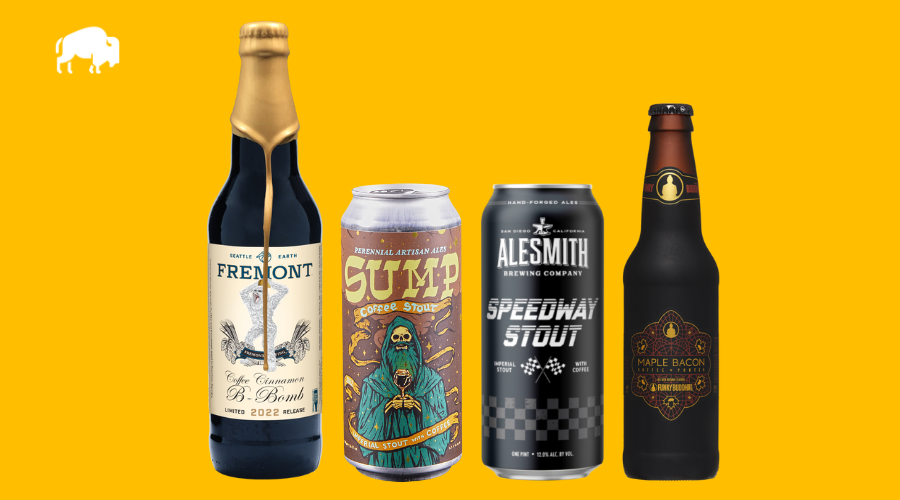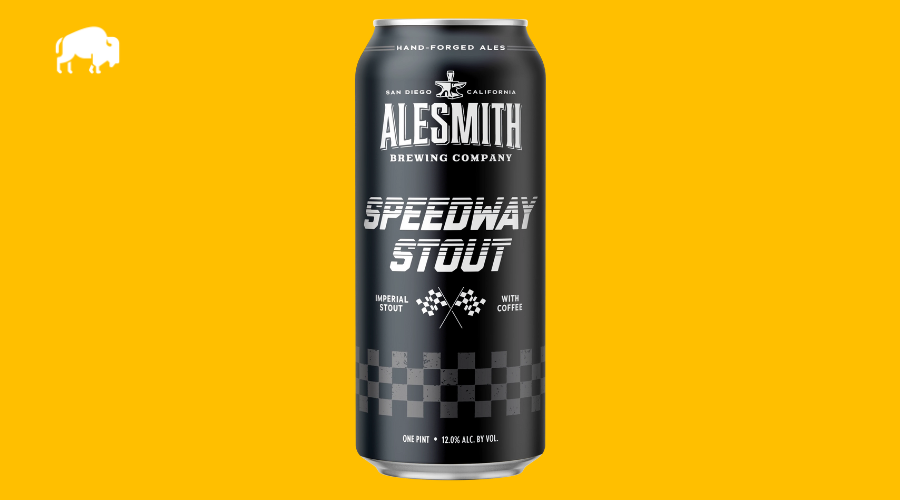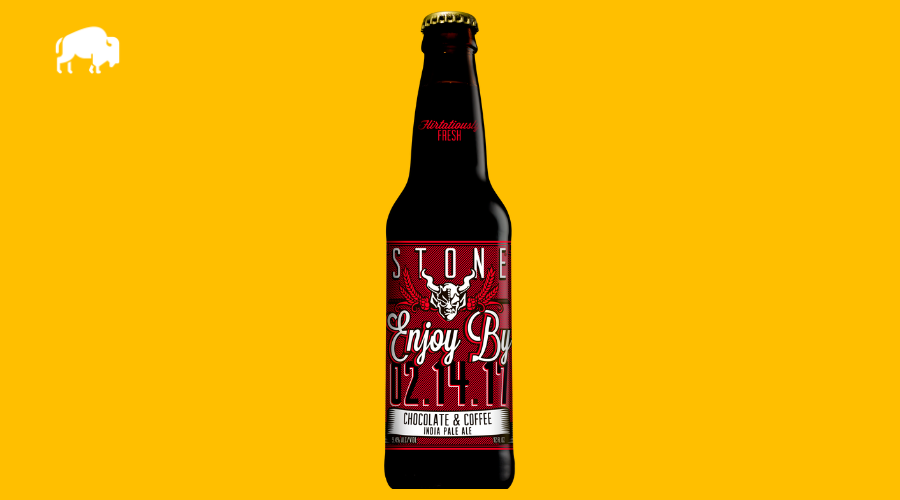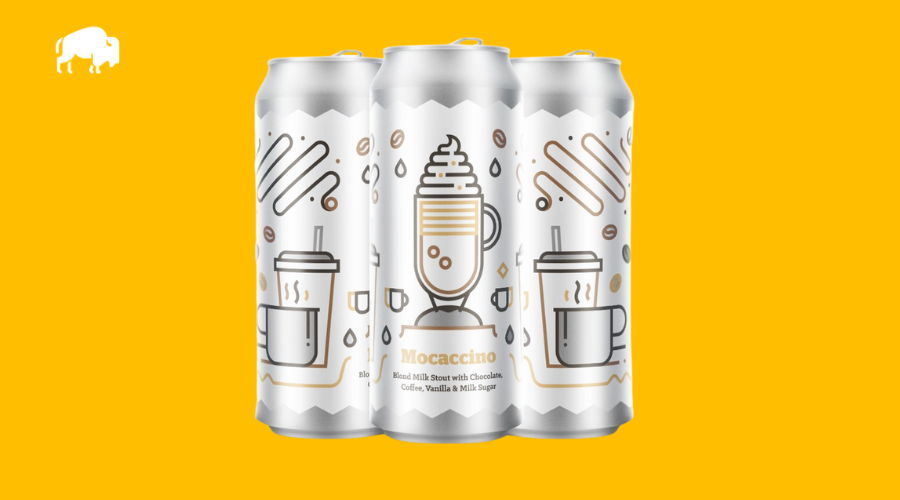Coffee is a daily necessity for over a billion people around the world. Roasty, fruity, bitter – coffee actually has a lot in common with beer, especially stout and porter. Combining the two, you get coffee beer.
We’ve put together a complete guide to brewing a fantastic beer with coffee.

What is a Coffee Beer?
Beer and coffee are beloved beverages. In every corner of the world, you’ll find the two liquid staples consumed in large volumes. Naturally, beer brewers have combined these beverages, concocting a delicious hybrid: coffee beer.
Coffee beer is a generic term for all beers flavored with coffee. Coffee (or coffee flavor) can be added at any point in the brewing process. There is a huge range of flavors and styles falling under the coffee-beer umbrella.
Let’s first take a look at the most common types of coffee beer.
Coffee Stout and Coffee Porter

The classic use of coffee in beer is in stout or porter. Dark, roasted malt flavors are an obvious pairing for coffee. Coffee complements both roasted malts and chocolate malt and adds layers of complexity.
Many top craft breweries have a coffee stout, often barrel-aged. Some renowned examples are Mikkeller’s Beer Geek Breakfast Stout and KBS by Founders Brewing Company.
Coffee Pale Ale and Coffee IPA

As two of the most popular styles in craft beer, pale ale and IPA were destined to collide with coffee at some point. It’s a tricky balance. Bitterness from both the hops and the coffee can clash. Brewers need to be careful not to overwhelm the beer with astringency or harshness.
When brewed with care, coffee pale ales and IPAs are a thing of beauty. Mixing piney, dank, and fruity hops with complex coffee flavors creates unique flavor combinations. Coffee can elevate specific hop characteristics, especially with a light roast bean. This makes for an unconventional yet delicious and refreshing drinking experience.
White Stout

A relatively uncommon style, but one worth mentioning, is white stout. It’s characterized by stout-like aroma, flavor, and mouthfeel… but with a blonde or pale appearance. This trompe-l’oeil of a beer is often infused with nitrogen gas to further replicate a typical stout.
White stout uses coffee to contribute roasty character without the color that you would get by using roasted malt.
What makes a good Coffee Beer?
Coffee beer should taste like coffee. Roasty, fruity, and slightly bitter. But it also has to be a beer.
Great coffee beer should have a clean, bright, and prominent coffee flavor. There should be no harsh coffee bitterness, no acrid sourness, and certainly no boiled coffee flavor (think Mr. Coffee).
We talked to Stroom, an exciting young brewery based in Ghent, Belgium. They brew a mix of styles with a focus on progressive flavors, drinkability, and balance. Their coffee IPA, Grindstone, is an outstanding and unique example of coffee beer.
Farrell Styers, head brewer and co-founder of Stroom, dreamt up this coffee-infused IPA in collaboration with a legendary punk band, Descendents. The band specifically wanted a coffee IPA, posing an interesting challenge for the excited brewer.
Grindstone IPA challenges your idea of pale beer. It’s 100% IPA, with pointed bitterness, round citrus fruit character, and a soft resiny finish. Woven through is a delicate interplay of robust, freshly brewed coffee. The hop profile is complemented by dark fruit and pleasantly bitter, lightly roasted coffee notes.
“My thinking was that it should be an IPA first, and the coffee should just be an interesting extra note. Because of that, I felt like too much roast would clash with the fruit and piney aspects of the IPA, but that tart fruit would work well with it,” Styers says.
He kindly shared his insight on how to brew the best possible coffee beer.
How to brew a Coffee Beer
There are countless methods of adding coffee to beer. Brewers have long experimented with coffee, most commonly in coffee stouts. These days, brewers experiment with all styles, coaxing delicate coffee flavors to elevate their beers.
So what is the best way to infuse coffee flavor into beer?
According to Styers, it starts with understanding the style and finding the right coffee to match your goal. “I think the style definitely influences the coffee selection. I’m not a coffee connoisseur, but when you start digging into it there’s a really wide palette of flavors to be had there.”
Choosing the Coffee
Coffee comes in many shapes, sizes, and characters. Factors that influence coffee flavor include origin, variety, processing, and roast level.
Stroom worked with a local roaster and explained what they were looking for in a coffee profile.
For Grindstone IPA, they wanted a coffee that complemented IPA flavors. At the same time, the coffee component needed to be prominent and structured.
They ended up finding a very light roast coffee with moderate to high acidity and stronger fruit notes than on chocolate.
For beers like stouts and porters, darker roasts, like a french roast, might work better to shine through the dark grain character. It’s all about matching the coffee profile to complement the desired flavors from the beer.
Unless you’re a coffee expert, it’s a great idea to chat with someone who deeply understands coffee. Head to your local roaster or third-wave coffee shop and talk with them rather than grabbing a random bag off the grocery store shelf.
How to Add Coffee to Beer
Coffee can be added at any part of the brewing process. From the mash all the way to packaging, the options are plentiful. There are, however, best practices that produce consistent and delicious results.
Styers was influenced by homebrewer-turned-pro Scott Janish, preferring to add coffee to the cold side. Adding the beans to the fermenter once the beer has finished fermenting contributes to a rounder coffee expression. As opposed to adding fresh hot coffee or instant coffee (gross).
At Stroom, their process involves circulating beer through a small tank fitted with a filter basket and filled with ground coffee. They thoroughly purge everything with CO2, then flood the tank with beer. The beer is then slowly pushed back into the fermenter. They repeat the process a few more times throughout the day before immediately carbonating and packaging.
For homebrewers, this process can be adapted for a smaller scale. Put freshly ground coffee in a sanitized mesh bag and add it directly to your fermenter 24 hours before packaging.
Coffee Quantity
At Stroom, for Grindstone IPA, they use about 3 grams of coffee per liter of beer (~½ ounce per gallon), coarsely ground. For a more robust coffee flavor, you can increase the amount by a maximum of 25%. It’s really an experimental process based on the roast and intensity of the chosen beans.
Many brewers opt to leave the beans whole, unground. For better extraction, a coarse grind is recommended. The grind size can be slightly larger than what’s typical for a French press or cold brew coffee.
Avoiding Contamination with Coffee Beer
When you purchase coffee beans, they’re not sterile. During the roasting process, high temperatures kill off any potential bacteria. But by the time the beans get to you, they will have passed through a series of processes that could have introduced wild yeast or bacteria.
Many brewers don’t worry about the potential for spoiling bacteria affecting their beer. Hops, alcohol, and low pH in beer help protect against contamination. That said, it’s better to be safe than sorry.
Styers errs on the side of caution. He devised a process that he extends to most cold side additions: “Any time we add herbs, spices, etc. on the cold side, I rinse them with grain alcohol. For the coffee, we rinse the beans before they’re ground on the assumption that if there’s anything alive, it’ll be on the outside.”
Best Practices when Brewing Beer with Coffee
Like beer brewing, the world of coffee has a million-and-one ways to brew a cup.
We have a few more tips, courtesy of Stroom, to really make your coffee beer shine:
Balanced bitterness. Go fairly light on the bittering hops to leave room for inherent coffee bitterness.
Freshness matters. Stroom works with their roaster to make sure they get the freshest beans. They grind it immediately before adding it to the fermenter to minimize the chance for the coffee to oxidize.
Contact time. Ensure flavor is extracted but not so long that tannins or other undesirable flavors are overpowering. About 24 hours is a great target.
Cold side or “dry beaning”. Adding coffee on the cold side helps reduce the chance of astringency from the beans.
Grindstone IPA Recipe
Here’s a homebrew version of Stroom’s recipe for their epic coffee beer, Grindstone IPA. A soft mouthfeel from large additions of wheat and oats give Grindstone a pillowy backbone. That’s all balanced by citrusy, resiny hops and fruit-forward, lightly roasted coffee notes.
Grindstone IPA Recipe
Here’s a homebrew version of Stroom’s recipe for their epic coffee beer, Grindstone IPA. A soft mouthfeel from large additions of wheat and oats give Grindstone a pillowy backbone. That’s all balanced by citrusy, resiny hops and fruit-forward, lightly roasted coffee notes.
| Final Volume | Original Gravity | Final Gravity | ABV | IBU | SRM |
|---|---|---|---|---|---|
| 5 Gallons | 1.055 | 1.010 | 6% | ~28 | 5 |
Fermentables
| Amount | Type | PPG | °L | Grist % |
|---|---|---|---|---|
| 6.15 lb | Pilsner Malt | 37 | 1.8 | 60% |
| 1.54 lb | Pale Malt | 39 | 2.3 | 15% |
| 1.54 lb | Wheat Malt | 38 | 1.8 | 15% |
| 1.03 lb | Golden Naked Oats | 33 | 10 | 10% |
| 10.26 lb |
Hops
| Amount | Variety | AA | Use | Time | IBU |
|---|---|---|---|---|---|
| 1 oz | Mandarina Bavaria | 8.5% | Boil | 60 min | 17 |
| ½ oz | Mandarina Bavaria | 8.5% | Whirlpool | 15 min | ~3 |
| 1 oz | Citra | 13% | Whirlpool | 15 min | ~8 |
| ½ oz | Mandarina Bavaria | 8.5% | Dry hop | 3 days | – |
| 2 oz | Citra | 13% | Dry hop | 3 days | – |
| 2 oz | El Dorado | 14% | Dry hop | 3 days | – |
Coffee
| Amount | Coffee Type | Use | Time |
|---|---|---|---|
| 2 oz | Light roast, medium to high acidity, fruit-forward whole bean | Fermenter | 1 day |
Yeast
1 pack (11g) – Fermentis SafAle US-05
Step 1 – Mash
Mash with a single infusion rest at 153°F for 60 minutes. Sparge the full volume into the kettle.
Step 2 – Boil
Bring the wort to a boil.
Add 60 minute hop addition.
Turn off heat.
Add whirlpool hops and steep for 15 minutes.
Chill wort to 68°F.
Transfer cooled wort to a sanitized fermenter, leaving behind trub and hop matter.
Oxygenate wort and pitch the yeast.
Step 3 – Fermentation and Dry Hop
Ferment at 68°F until gravity is about 1.020 (2 to 4 days).
Let the temperature rise free until fermentation is complete and gravity is stable.
Add dry hops three days before packaging.
Step 4 – Coffee Addition (24 hours before packaging)
Soak whole coffee beans in vodka for 1 hour to sanitize the beans. Use just enough vodka to fully wet the surfaces of the beans.
Strain beans from the vodka and let dry until most of the vodka drips away.
Coarsely grind coffee in a sanitized grinder or blender.
Put ground coffee in a sanitized mesh bag and add to the fermenter.
Purge the headspace of the fermenter with CO2 to minimize oxidation.
Allow the coffee to infuse in beer for 24 hours.
Step 5 – Packaging
Package the beer and carbonate to 2.5 to 2.7 volumes of CO2.
If kegging (recommended), minimize oxygen by transferring beer with a closed transfer.
Allow carbonated beer to condition for 1 to 2 weeks.
Final Thoughts
Beer and coffee are two continuously evolving artisan products. As tastes change and techniques refine, there will surely be new and innovative crossovers.
For Styers and Stroom, it’s all about experimentation. “There are probably dozens of other ways to make great coffee beers, so if you have the opportunity: experiment! Just do a good job of documenting what you’re doing so you can look back and make changes with the next brew,” he says.
So sit back, have a cup of joe, and start dreaming up your coffee beer!

